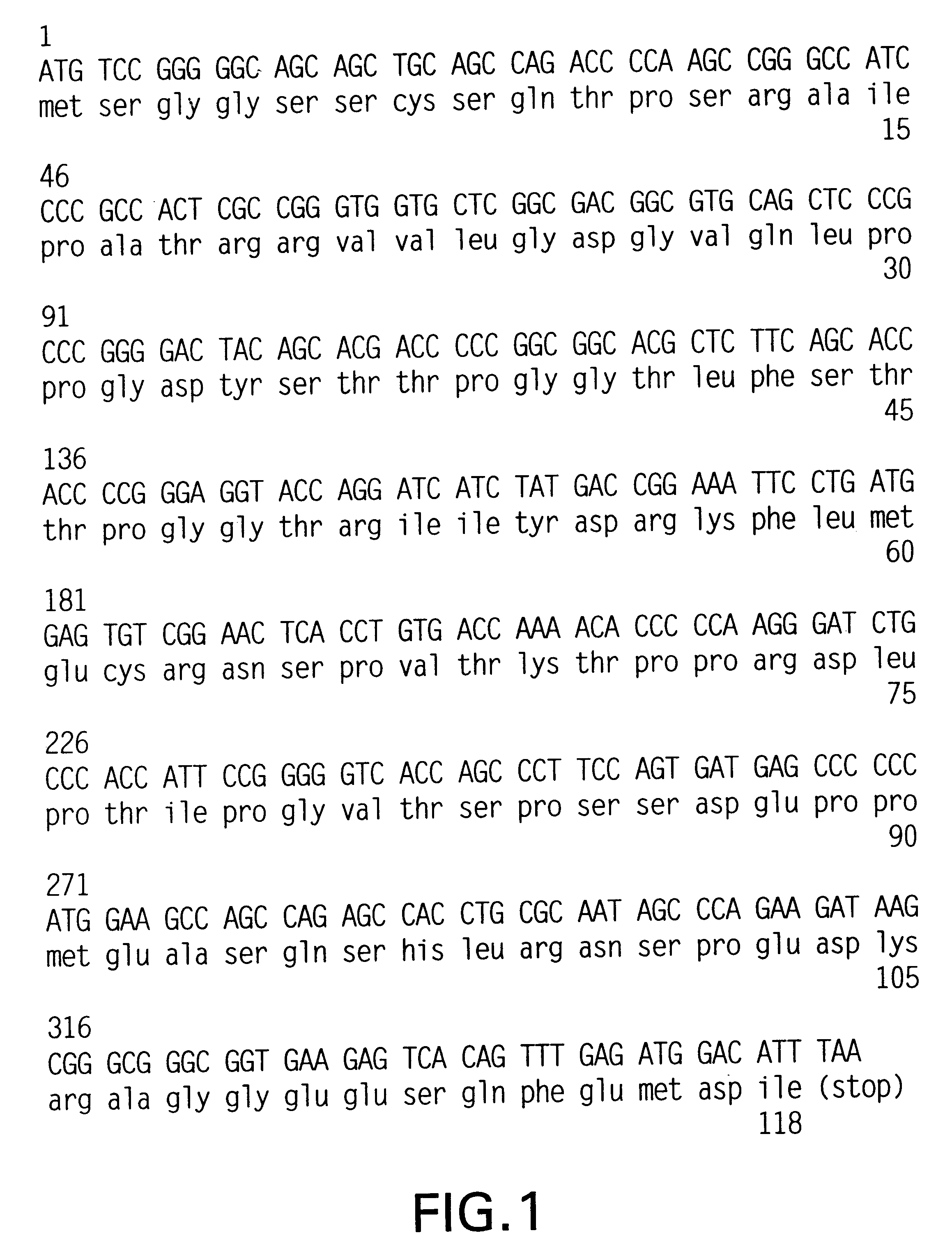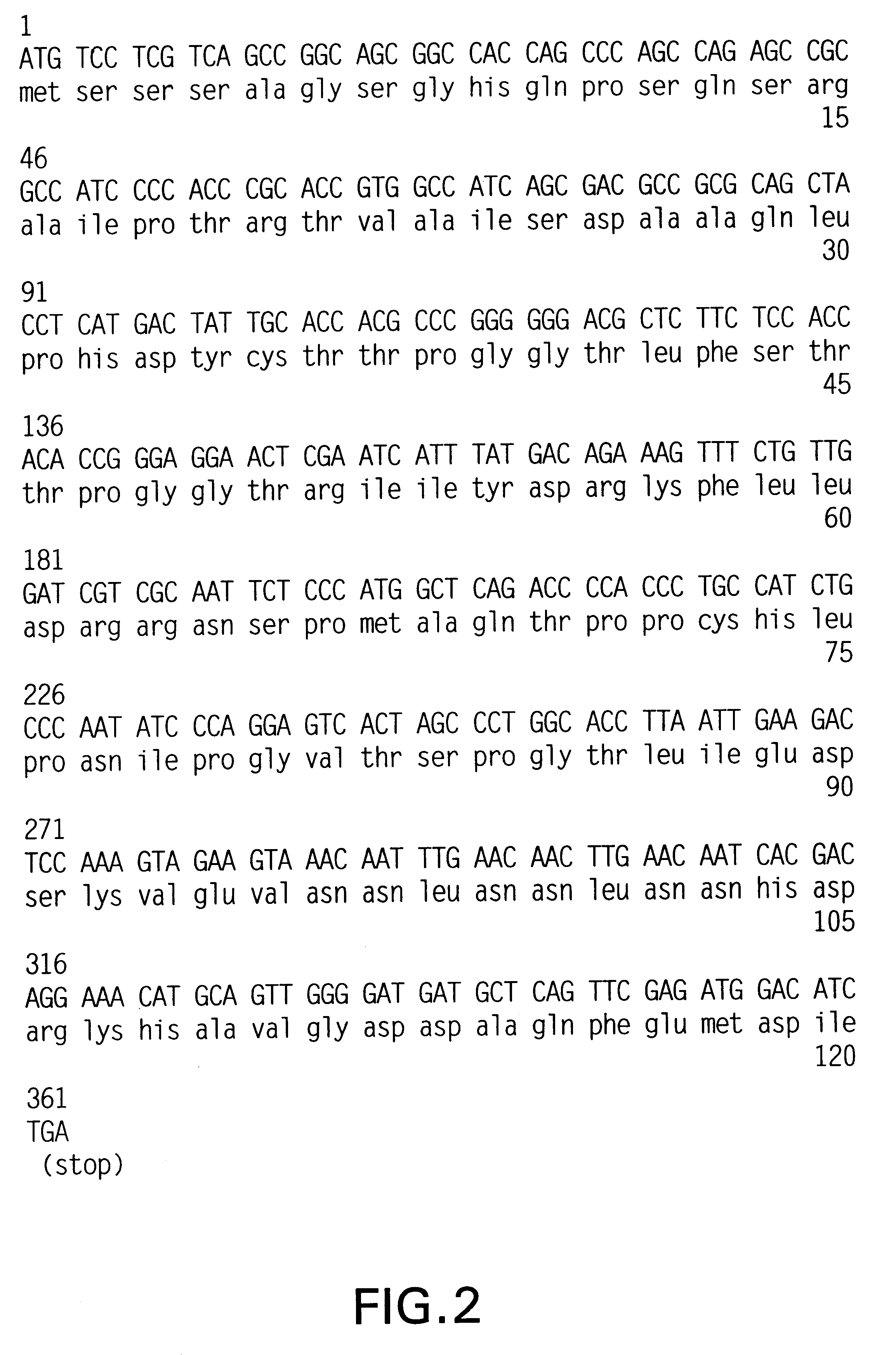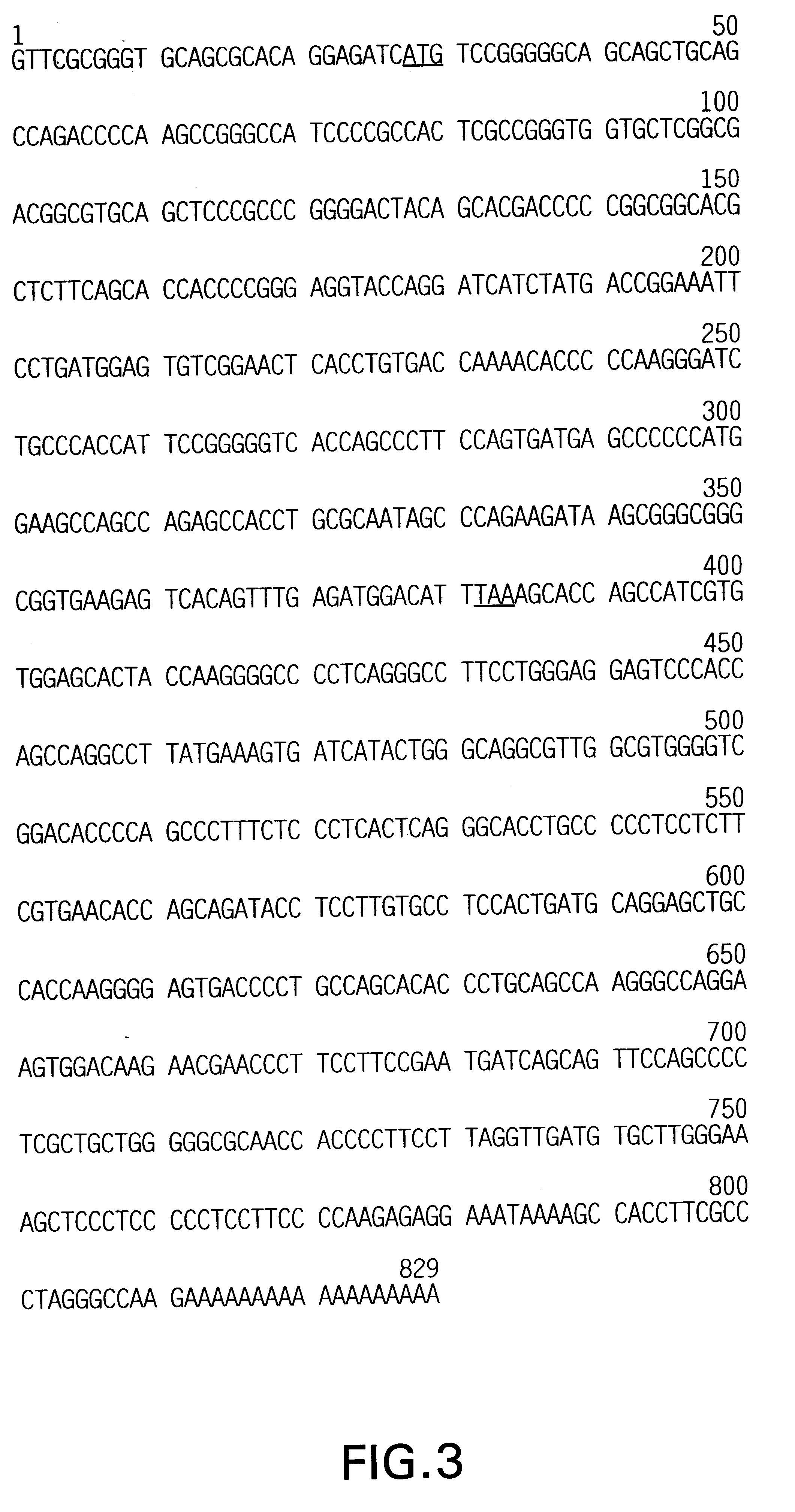Methods for treating hormone disorders
a hormone disorder and hormone technology, applied in the field of hormone disorders, can solve the problems of serious and important health problems, inability to maintain the glucose homeostasis in the bloodstream, and serious vascular complications involving both macro- and microvessels
- Summary
- Abstract
- Description
- Claims
- Application Information
AI Technical Summary
Problems solved by technology
Method used
Image
Examples
example 1
Cloning of cDNAs for 4E-BP1 and 4E-BP2
The "interaction cloning" technique was used to identify proteins which interact with eIF-4E. A cDNA clone encoding eIF-4E was modified at the terminus by inserting the phosphorylation site for the heart muscle kinase (HMK) (Blanar & Rutter, Science 256, 1014-1018, 1992). The recombinant protein was expressed in E. coli and purified on a m.sup.7 GDP-affinity column to homogeneity (Edery et al., Gene 74, 517-525, 1988). It was labelled using [.gamma.-.sup.-32 P]ATP and bovine heart muscle kinase (Sigma) to a specific activity of 1.times.10.sup.8 cpm / .mu.g, and used to screen a human placenta .lambda.gt 11 cDNA library in a "far-Western assay" (Blanar & Rutter, 1992). Approximately 1 million plaques were screened and nine plaques which interacted with the eIF-4E probe were isolated. The cDNA inserts of positive .lambda. plaques were released with Sal I, subcloned into pBluescript KS (Stratagene), and sequenced completely in both orientations. Thre...
example 2
Homology between 4E-BP1 and PHAS-I
By searching a DNA database, a high degree of identity (93%, and 97% similarity) was found between the protein sequence of the human 4E-BP1, and a recently published cDNA encoding a rat protein termed PHAS-I (Hu et al. Proc. Natl. Acad. Sci. USA 91, 3730-3734 (1994); FIG. 2). This indicates that the 4E-BP1 is the human homologue of PHAS-I, which was initially identified as a protein phosphorylated in response to insulin in rat adipose tissue and in murine 3T3-L1 adipocytes.
example 3
Fusion Proteins
Plasmids expressing 4E-BP1 and 4E-BP2 in the form of readily purified fusion proteins were constructed as follows. 4E-BP1 cDNA was released from pBluescript KS by digestion with Pvu II and Eco RI (this results in the deletion of three N-terminal amino-acids), and subcloned into pGEX-2T cleaved with Sma I and Eco RI, to generate plasmid pGEX-2T-4E-BP1. 4E-BP2 cDNA was released from .lambda.gt 11 DNA by digestion with EcoR I and subcloned into Eco RI-digested plasmid pGEX-2T[128 / 129], to generate pGEX-2T[128 / 129]-4E-BP2. pGEX-2T[128 / 129], and thus pGEX-2T[128 / 129]-4E-BP2, contain an HMK flag. Glutathione S-transferase (GST and the fusion proteins GST-4E-BP1 and GST-4E-BP2 were expressed in E.coli BL21 from, respectively, pGEX-2T, pGEX-2T-4E-BP1, and pGEX-2T[128 / 129]-4E-BP2, and purified as described (Methot et al., Mol. Cell. Biol. 14, 2307-2316, 1994). Histidine-tagged PHAS-I protein (His-Tag-PHAS-I) was expressed in E.coli BL21 (DE3), and purified on a HisBind resin (...
PUM
| Property | Measurement | Unit |
|---|---|---|
| Fraction | aaaaa | aaaaa |
| Fraction | aaaaa | aaaaa |
| Fraction | aaaaa | aaaaa |
Abstract
Description
Claims
Application Information
 Login to View More
Login to View More - R&D
- Intellectual Property
- Life Sciences
- Materials
- Tech Scout
- Unparalleled Data Quality
- Higher Quality Content
- 60% Fewer Hallucinations
Browse by: Latest US Patents, China's latest patents, Technical Efficacy Thesaurus, Application Domain, Technology Topic, Popular Technical Reports.
© 2025 PatSnap. All rights reserved.Legal|Privacy policy|Modern Slavery Act Transparency Statement|Sitemap|About US| Contact US: help@patsnap.com



